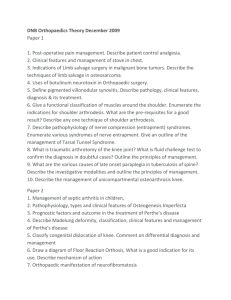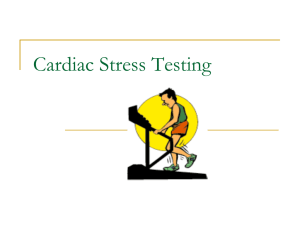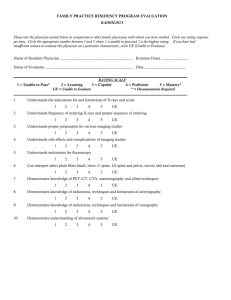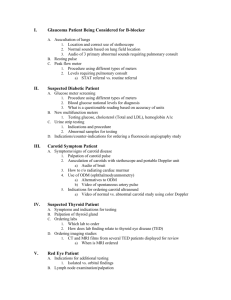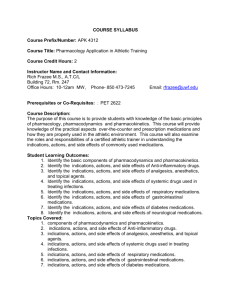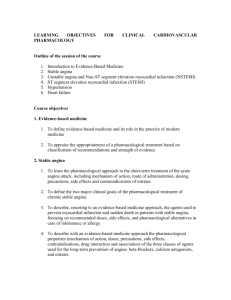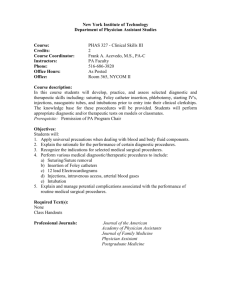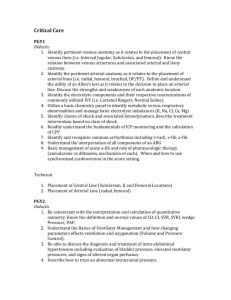20131118-194215
advertisement
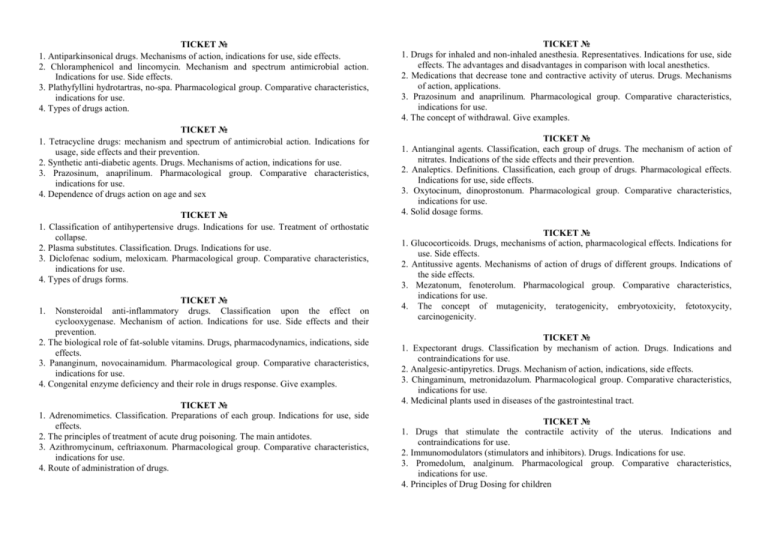
TICKET № 1. Antiparkinsonical drugs. Mechanisms of action, indications for use, side effects. 2. Chloramphenicol and lincomycin. Mechanism and spectrum antimicrobial action. Indications for use. Side effects. 3. Plathyfyllini hydrotartras, no-spa. Pharmacological group. Comparative characteristics, indications for use. 4. Types of drugs action. TICKET № 1. Tetracycline drugs: mechanism and spectrum of antimicrobial action. Indications for usage, side effects and their prevention. 2. Synthetic anti-diabetic agents. Drugs. Mechanisms of action, indications for use. 3. Prazosinum, anaprilinum. Pharmacological group. Comparative characteristics, indications for use. 4. Dependence of drugs action on age and sex TICKET № 1. Classification of antihypertensive drugs. Indications for use. Treatment of orthostatic collapse. 2. Plasma substitutes. Classification. Drugs. Indications for use. 3. Diclofenac sodium, meloxicam. Pharmacological group. Comparative characteristics, indications for use. 4. Types of drugs forms. TICKET № Nonsteroidal anti-inflammatory drugs. Classification upon the effect on cyclooxygenase. Mechanism of action. Indications for use. Side effects and their prevention. 2. The biological role of fat-soluble vitamins. Drugs, pharmacodynamics, indications, side effects. 3. Pananginum, novocainamidum. Pharmacological group. Comparative characteristics, indications for use. 4. Congenital enzyme deficiency and their role in drugs response. Give examples. 1. TICKET № 1. Adrenomimetics. Classification. Preparations of each group. Indications for use, side effects. 2. The principles of treatment of acute drug poisoning. The main antidotes. 3. Azithromycinum, ceftriaxonum. Pharmacological group. Comparative characteristics, indications for use. 4. Route of administration of drugs. TICKET № 1. Drugs for inhaled and non-inhaled anesthesia. Representatives. Indications for use, side effects. The advantages and disadvantages in comparison with local anesthetics. 2. Medications that decrease tone and contractive activity of uterus. Drugs. Mechanisms of action, applications. 3. Prazosinum and anaprilinum. Pharmacological group. Comparative characteristics, indications for use. 4. The concept of withdrawal. Give examples. TICKET № 1. Antianginal agents. Classification, each group of drugs. The mechanism of action of nitrates. Indications of the side effects and their prevention. 2. Analeptics. Definitions. Classification, each group of drugs. Pharmacological effects. Indications for use, side effects. 3. Oxytocinum, dinoprostonum. Pharmacological group. Comparative characteristics, indications for use. 4. Solid dosage forms. TICKET № 1. Glucocorticoids. Drugs, mechanisms of action, pharmacological effects. Indications for use. Side effects. 2. Antitussive agents. Mechanisms of action of drugs of different groups. Indications of the side effects. 3. Mezatonum, fenoterolum. Pharmacological group. Comparative characteristics, indications for use. 4. The concept of mutagenicity, teratogenicity, embryotoxicity, fetotoxycity, carcinogenicity. TICKET № 1. Expectorant drugs. Classification by mechanism of action. Drugs. Indications and contraindications for use. 2. Analgesic-antipyretics. Drugs. Mechanism of action, indications, side effects. 3. Chingaminum, metronidazolum. Pharmacological group. Comparative characteristics, indications for use. 4. Medicinal plants used in diseases of the gastrointestinal tract. TICKET № 1. Drugs that stimulate the contractile activity of the uterus. Indications and contraindications for use. 2. Immunomodulators (stimulators and inhibitors). Drugs. Indications for use. 3. Promedolum, analginum. Pharmacological group. Comparative characteristics, indications for use. 4. Principles of Drug Dosing for children TICKET № 11 1. Glycoside and non-glycoside cardiotonics. Drugs. Cardiac and extracardiac effects of cardiac glycosides. Indications for use. 2. Enzyme drugs that affect digestion. Drugs. Indications for use. Antyenzyme medicines. 3. Lincomycini hydrochloridum, gentamicinum. Pharmacological group. Comparative characteristics, indications for use. 4. Effect of alcohol on effects of drugs. TICKET № 1. Preparations of female sex hormones (estrogen and progestogens). Biological role, representatives, indications and contraindications for use. 2. Classification of antiarrhythmic drugs. Preparations of each group. Mechanism of action. 3. Aspirinum, celecoxib. Pharmacological group. Comparative characteristics, indications for use. 4. Phytotherapy. Advantages and disadvantages of drugs from plant origin. TICKET № 1. Narcotic analgesics. Mechanism of analgesic effect. Pharmacological properties. Indications for use. Side effects. Help in acute morphine poisoning. 2. Bile-expelling drugs and hepatoprotectors. Preparations of each group. Indications for use 3. Levodopa, cyclodolum. Pharmacological group. Comparative characteristics, indications for use. 4. Rectal and vaginal suppositories. Features of this medicinal forms. TICKET № 1. Classification of laxatives, mechanism of action. Indications for use. 2. Antiepileptic drugs. Representatives. Mechanism of action. Indications for use. Side Effects. Help with status epilepticus. 3. Lidocaine, novocaine. Pharmacological group. Comparative characteristics, indications for use. 4. Dependence of drugs on the way and method of administration. TICKET № 1. Hemostatics. Classification. Preparations of each group. Mechanisms of action. Indications for use. 2. Psychostimulants and adaptogens. Definitions. Indications for use. Side effects. 3. Nitroglycerinum, molsydominum. Pharmacological group. Comparative characteristics, indications for use. 4. Determination of dose. Types of doses. TICKET № 1. Antiseptic and disinfectants: definition, classification, drugs of each group. 2. Inhibitors of angiotensin-converting enzyme and angiotensin receptor blockers. Drugs. Mechanisms of action. Indications for use, side effects. 3. Ascorbic acidum, tocopheroli acetas. Pharmacological group. Comparative characteristics, indications for use. 4. The concept of pharmacokinetics. TICKET № 1. Preparations of aminoglycosides. Mechanism and spectrum of antimicrobial action. Indications for use. Side effects, their prevention, contraindications. 2. Nootropic agents. Definitions. Drugs. Pharmacological effects. Indications for use. Side Effects. 3. Heparin, warfarin. Pharmacological group. Comparative characteristics, indications for use. 4. The requirements imposed on injectable drugs, prescribing rules, routes of administration. TICKET № 1. M-cholinomimetics and anticholinesterase agents. Drugs. Pharmacological effects. Indications for use. Side effects and contraindications. Help with anticholinesterase poisoning agents. 2. Antiviral agents. Classification, each group of drugs. Indications of the side effects. 3. Furosemidum, mannitum. Pharmacological group. Comparative characteristics, indications for use. 4. Types of drug therapy TICKET № 1. The biological role of insulin, mechanism of action. Insulin drugs. Indications for use. Help with hyperglycemic and hyperglycemic coma. 2. Drugs for relief of bronchospasm. Classification, each group of drugs, their mechanisms of action. 3. Sulfacyl sodium, biseptolum. Pharmacological group. Comparative characteristics, indications for use. 4. The role of genetic deficiency in butyrylcholinesterase in the effect of drugs. TICKET № 1. Drugs for treatment of hyper- and hypothyroidism. Mechanisms of action. Pharmacological effects. Indications for use. 2. Vomiting and antiemetic drugs. Mechanisms of action. Pharmacodynamics. Indications for use, side effects. 3. Benzylpenicillinum sodium, amoxicillinum. Pharmacological group. Comparative characteristics, indications for use. 4. Ocular medicinal forms and their characteristics. TICKET № 1. Basic principles of chemotherapy. Classification of antibiotics by the mechanism of action. Preparations of each group. 2. Tranquilizers and sedatives. Drugs. Pharmacological effects. Indications for use. Side effects. 3. Insulinum, glibenclamidum. Pharmacological group. Comparative characteristics, indications for use. 4. Role of N-acetyltransferase in the metabolism of certain drugs. TICKET № 1. Penicillin drugs. Classification. Mechanism and spectrum antimicrobial action. Indications for use. Side effects that prevent them. 2. Tools for the prevention and treatment of atherosclerosis. Classification by mechanism of action. Indications for use. 3. Diphenhydramine, Loratadine. Pharmacological group. Comparative characteristics, indications for use. 4. Solutions for outdoor use. Ways of expressing their concentration. TICKET № 1. Antidiarrheal agents. Drugs. Mechanisms of action, indications for use. 2. Stimulating agents. Mechanism of local and reflex action. Drugs. Indications for use, side effects and contraindications. 3. Consists of digoxin, dobutamine. Pharmacological group. Comparative characteristics, indications for use. 4. Medicinal plants used in diseases of the cardiovascular system. TICKET № 1. Local anesthetics. Drugs for different types of local anesthesia and their concentration. Mechanism of action. Other effects of local anesthetics. Side effects and their prevention. 2. Drugs that improve cerebral blood circulation. Classification. Pharmacological effects. Indications for use. Side effects. 3. Interferonum, Remantadinum. Pharmacological group. Comparative characteristics, indications for use. 4. Synergism and antagonism in the action of drugs. TICKET № 1. Diuretics. Classification by mechanism of action. Preparations of each group. Indications for use, side effects and their prevention. 2. Drugs that affect platelet aggregation. Drugs. Mechanism of action. Indications and contraindications for use. 3. Libexinum, Ambroxolum. Pharmacological group. Comparative characteristics, indications for use. 4. Define the concepts: drug substance, drug, dosage form drug. TICKET № 1. Antihelmintic drugs, means preparations of each group. Indications for use. Side effects, contraindications. 2. Drugs influence on fibrinolysis. Mechanism of action. Indications and contraindications for use. 3. Hydrogen peroxidum, chlorhexidinum. Pharmacological group. Comparative characteristics, indications for use. 4. Prescription: structure and rules of writing prescriptions. Writing prescriptions for potent, toxic and narcotic drugs. TICKET № 1. Sulfonamides. Classification. Representatives. Mechanism and spectrum of activity. Indications for use. Side effects their prophylaxis. 2. Preparation of water-soluble vitamins: biological role. Indications for use. 3. Trypsin, contrical. Pharmacological group. Comparative characteristics, indications for use. 4. Ways to prevent the side effects of drugs. TICKET № 1. Hypnotics. Classification. Drugs. Mechanisms of action. Pharmacological effects. Indications for use. Side effects. Acute poisoning with barbiturates and emergency aid. 2. Classification of drugs which affect hematopoiesis. Iron preparations, their pharmacokinetics and pharmacodynamics, side effects. Poisoning by iron supplementation, assistance measures. 3. Lisinoprilum, losartanum. Pharmacological group. Comparative characteristics, indications for use. 4. Sources of drugs TICKET № 1. Anticoagulants. Drugs. Mechanism of action. Pharmacodynamics. Indications for use, side effects and their elimination. 2. Covering, astringent, adsorbing agents. Preparations of each group. Mechanisms of action. Indications for use. 3. Rifampicinum, isoniazidum. Pharmacological group. Comparative characteristics, indications for use. 4. Absorption of drugs, the basic mechanisms. TICKET № 1. Antipsychotic drugs. Classification. Representatives. Pharmacological effects. Indications for use. Side effects. 2. Preparation of male sex hormones (androgens). Biological role, indications for use. Steroid anabolic drugs. Drugs, indications for use. 3. Metoclopramidum, domperidonum (motilium). Pharmacological group. Comparative characteristics, indications for use. 4. Sensitization, tachyphylaxis, tolerance, drug dependence. TICKET № 1. Antiallergic agents. Classification, each group of drugs. Mechanism of action. Pharmacodynamics. Indications for use. Help in anaphylactic shock. 2. Antituberculosis drugs: classification, drugs. Mechanisms of action. Side effects and their prevention. 3. Amiodaronum, verapamilum. Pharmacological group. Comparative characteristics, indications for use. 4. The concept of the safety of medicines. Pharmacovigilance system in the world and in Ukraine TICKET № 1. Classification of drugs which block adrenergic receptors. Representatives of each group. Pharmacodynamics. Indications for use, side effects, contraindications. 2. Fluoroquinolones. Classification. Drugs. Mechanism and spectrum of activity. Indications for use. Side Effects. Contraindications. 3. Thiaminum, pyridoxinum. Pharmacological group. Comparative characteristics, indications for use. 4. Infusions and decoctions. Advantages and disadvantages. TICKET № 1. Classification of N-cholinoblockers. Representatives of each group. Mechanism of action. Pharmacodynamics. Indications for use, side effects, contraindications. 2. Cephalosporines and macrolides. Representatives of each group. Mechanisms and spectrum antimicrobial action. Indications for use. Side effects. 3. Prednisolonum, Diclofenac sodium. Pharmacological group. Comparative characteristics, indications for use. 4. Soft medicinal forms. TICKET № 1. Antacids and antisecretory agents. Representatives of each group. Mechanisms of action. Indications for use. Side Effects. 2. Antagonists of calcium ions. Drugs. The mechanism of action, pharmacological properties, indications for, side effects. 3. Meropenem (Meronem), clarithromycinum. Pharmacological group. Comparative characteristics, indications for use. 4. The concept of material and functional cumulation. TICKET № 1. Drugs that block M-cholinoreceptors. Drugs. Pharmacodynamics. Indications for use. Side effects and contraindications. Help in case of M-cholinoblokers poisoning. 2. Antifungal drugs. Mechanisms and spectrum of activity. Features of different drugs. Side Effects. 3. Sibazonum, carbamazepinum. Pharmacological group. Comparative characteristics, indications for use. 4. Ways of elimination of drugs. LIST PRPARATIV you need to know for the exam. (Specify the group to which the drug and its indications for use) 1. Atropini sulfas 2. Platyphyllini hydrotartras 3. Mezatonum 4. Nazol 5. Adrenalini hydrochloridum 6. Anaprilinum 7. Bisoprololum 8. Clophellinum 9. Ventolin (Salbutamolum) 10. Lidocainum 11. Novocainum 12. Nospanum (drotaverinum) 13. Papaverini hydrochloridum 14. Strophantinum 15. Enalapril 16. Pananginum 17. Magnesium sulfas 18. Gutalax 19. Omeprazolum 20. Ranitidinum 21. Gastrotsepinum 22. Mezim 23. Ambroxolum 24. Acetylcysteine 25. Libexinum 26. Paracetamolum 27. Diclofenac sodium 28. Nimesulide 29. Insulinum 30. Glibenclamidum 31. Prednisolonum 32. Heparinum 33. Warfarinum 34. Dimedrolum 35. Loratadinum 36. Almagelum 37. Essentiale 38. Metronidazolum 39. Acidum acytylsalicylicum 40. Amoxicillinum 41. Cefazolinum 42. Ofloxacinum 43. Sumamed (azitromitsyn) 44. Dicynonum 45. Testosteronum 46. Oxytocinum 47. Sibazonum 48. Proseriunum 49. Clotrimazolum 50. Nitroxolinum 51. Analginum 52. Multivitamin complex
